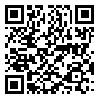Volume 15, Issue 4 (Volume 15, No 4 2025)
jdc 2025, 15(4): 253-268 |
Back to browse issues page
Download citation:
BibTeX | RIS | EndNote | Medlars | ProCite | Reference Manager | RefWorks
Send citation to:



BibTeX | RIS | EndNote | Medlars | ProCite | Reference Manager | RefWorks
Send citation to:
Torkashvand F, Chalechale A, Vafi S. Segmentation of skin lesions using the LSE method for heterogeneous dermoscopic images in color spaces. jdc 2025; 15 (4) :253-268
URL: http://jdc.tums.ac.ir/article-1-5759-en.html
URL: http://jdc.tums.ac.ir/article-1-5759-en.html
1- School of Engineering , Department of Computer Engineering, Razi University, Kermanshah, Iran
2- School of Engineering , Department of Computer Engineering, Razi University, Kermanshah, Iran ,chalechale@razi.ac.ir
3- College of Science and Technology, Charles Darwin University, Darwin, Australia
2- School of Engineering , Department of Computer Engineering, Razi University, Kermanshah, Iran ,
3- College of Science and Technology, Charles Darwin University, Darwin, Australia
Abstract: (114 Views)
Background and Aim: Image brightness heterogeneity is one of the major challenges in computer image processing that can lead to inaccurate results in image segmentation. Despite the existence of numerous segmentation methods, few studies have been conducted on the effect of brightness heterogeneity and the selection of the best color channels in segmentation. In this paper, different color spaces have been used for automatic detection of skin lesions.
Methods: In this study, the LSE (Level Set Evolution) segmentation method along with intensity smoothing has been used for computer recognition of skin lesions. First, the brightness heterogeneity is reduced and a more uniform image is created. Then, the proposed segmentation divides the image domain into distinct regions. This method results in more accurate recognition of skin lesions.Results: The proposed method has been tested on 200 dermoscopic images from the known PH2 dataset using different color channels. The results show that this method performs better than other methods. Accuracy of 97%, sensitivity of 98%, specificity of 99% and Dice coefficient of 92% have been obtained.
Conclusion: This method has the ability to accurately isolate and diagnose lesions and can help doctors in the treatment process of skin lesions.
Type of Study: Research |
Subject:
General
Received: 2025/04/4 | Accepted: 2026/02/4 | Published: 2026/02/4
Received: 2025/04/4 | Accepted: 2026/02/4 | Published: 2026/02/4
Send email to the article author
| Rights and permissions | |
 |
This work is licensed under a Creative Commons Attribution-NonCommercial 4.0 International License. |





